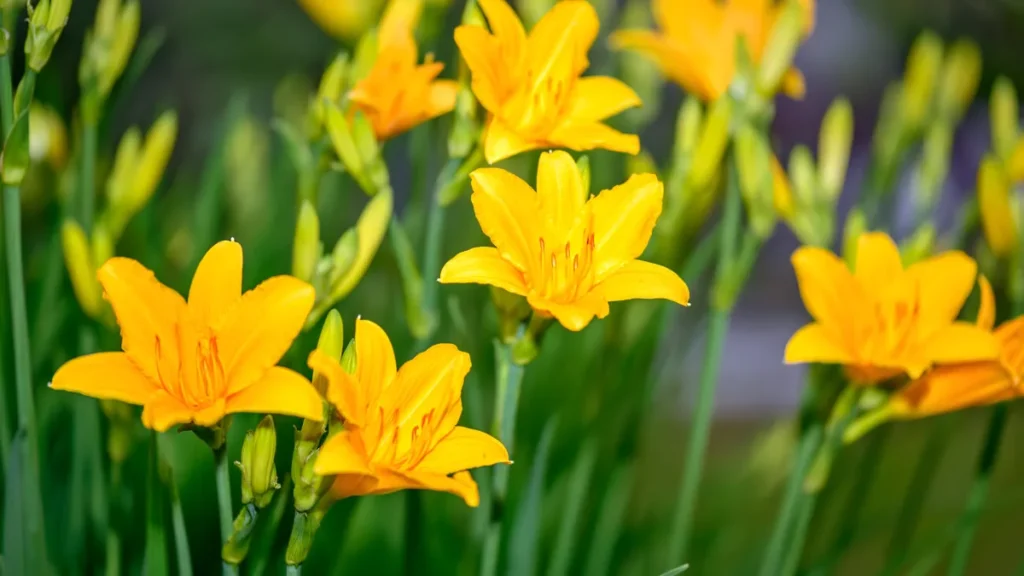One of the most popular flowering plants is lilies, prized for their stunning flowers, vibrant colors, and heady scent. Lilies are a great option to create a striking focal point or blend in with other flowers in your garden. This article will look at the top six types of lilies to brighten up your landscape and add charm.
The term “lily” does not refer to all botanical lily plants. Growing from bulbs, true lilies are perennial plants with a distinctive scale structure and enormous, often fragrant petals that bloom in the spring or summer. Some lilies are picky, but most are easy to grow.
Since there are more than 2,000 types of lilies, it is understandable that they have several classifications. Due to extensive cross-breeding, there are now many different types of lilies in a wide range of colors and shapes. Varieties also vary in hardiness and site requirements in addition to appearance.
Here’s a list of some different types of lilies:
1. Asiatic lilies: A splash of vibrancy
Asiatic lilies are popular due to their ease of production. They bloom early in summer and come in a variety of colors, from pastels to bright oranges and yellows. Although odorless, the vibrant hues make up for it. Popular cultivars include ‘Lollipop’ and ‘Buff Pixie,’ a dwarf variety that grows 12 inches tall and thrives in pots.
USDA Hardiness zones 3-8 require full sun to moderate shade, well-draining soil, and versatile use in garden beds or containers.
2. Oriental iilies: The fragrant showstoppers
Oriental lilies, known for their fragrant and elegant blooms, provide vibrant color throughout the season. Reaching three to six feet tall, they are ideal for cut flower bouquets due to their sturdy stems. They come in pink, white, and red hues.
Oriental lilies are ideal for gardeners who prefer full sun and partial shade, with their hardiness across USDA zones 5-9 when grown in well-drained soil.
Top varieties to consider include ‘Stargazer’, known for its deep pink blooms and white edges, and ‘Casa Blanca’, renowned for its pure white flowers and strong fragrance.
3. Trumpet lilies: Majestic blooms with a sweet scent
Trumpet lilies, known for their trumpet-shaped blossoms, add grandeur and vertical intrigue to gardens. Growing up to 4-8 feet, they offer striking displays in pastel hues, creamy whites, and yellows. Variations like ‘Golden Splendor’ and ‘Pink Perfection’ offer vivid yellow and delicate pink blossoms, providing a refined look.
The trumpet lily, the garden’s crown jewel, blooms from late spring to early August, especially in well-drained soil and full sun. Its unique scent, particularly at dusk, fills the air and retains its fragrance even after cutting, making it perfect for bouquets or centerpieces. The lilies’ leaves create a beautiful background and sturdy stalks support their flowers.
4. Martagon lilies: The graceful woodland beauties
Martagon lilies, also known as “Turk’s cap lilies,” are a popular choice for gardens with a wooded theme due to their recurved, downward-facing petals. These lilies can reach 4-6 feet and bear multiple blooms on a single stalk. They are shade-tolerant and are best placed at the edge of a forest garden. Their subdued pink, purple, and orange hues are often flecked with freckles. The dark maroon flowers of ‘Arabian Night contrast with the deep red, golden-spotted blossoms of ‘Claude Shride’.
Martagon lilies thrive in rich, moist soil and shade, making them ideal for naturalized or woodland gardens. They bloom from late spring to early summer, creating a fragrant oasis and symbolizing the elegance and power of a single stem.
5. LA hybrid lilies: The best of both worlds
LA hybrid lilies combine Oriental lilies’ elegant scent with Asiatic lilies’ vibrant hues, making them ideal for gardeners seeking the best of both varieties. With a medium height (2-5 feet), they are adaptable and suitable for flower beds and containers. The best varieties are ‘Eyeliner’, featuring white blooms with a thin black line, and ‘Royal Sunset’, featuring bright orange flowers with golden overtones.
These cultivars are known for their resilience and versatility, thriving in full sun to moderate shade. They bloom in late spring to early summer, blending European robustness with Asian delicacy, adding an elegant touch to your landscape.
6. Tiger lilies: The iconic spotted blooms
Tiger lilies are renowned for their hardiness and characteristic speckled petals. Gardeners that value striking, eye-catching flowers will always choose these lilies. Tiger lilies are a productive addition to any garden, reaching heights of 3–4 feet and bearing many blooms on each stalk. Their black-spotted, bright orange blossoms make a dramatic contrast that draws attention.
Tiger lilies, known for their trumpet-shaped flowers and resilient stems, are ideal for gardeners due to their aesthetic appeal. They thrive in well-drained soil and full sun, making them versatile cut flowers for bouquets. Their durable stem and long-lasting blooms make them a great choice.
Conclusion:
Because of their great adaptability, lilies can be used in many different garden designs. They add texture and color that improve the overall design, whether they are planted in mixed flower beds, formal borders, or realistic meadows. Throughout the growth season, you can have a colorful and aromatic outdoor space by selecting one of these six types of lilies.
Certainly! If you’d like to learn more, please consider following our WhatsApp Channel: Harvest Gardening
A frequently asked questions:
Q1: What are the most common types of lilies?
A1: The most common types of lilies are Asiatic lilies, which are recognized for their vibrant colors but lack smell, and Oriental lilies, which are praised for their enormous, fragrant blooms. Other famous types are trumpet lilies, which are distinguished by their elongated shape, and tiger lilies, which have orange petals and black dots.
Q2: How many types of lilies are there?
A2: The genus Lilium contains approximately 80 to 100 species of real lilies, which are divided into nine major categories based on their characteristics. Furthermore, various hybrid lilies have been developed, with a wide range of colors, forms, and sizes.

